Suppose a table with 3 columns. each row represents a unique combination of each value:
a a a
a a b
a b a
b b a
b b c
c c a
...
however, what I want is,
aab = baa = aba
cca = cac = acc
...
Finally, I want to get these values in a CSV format as a combination for each value like the image that I attached.

Thanks for your help!
Below is the query to generate my problem, please take a look!
--=======================================
--populate test data
--=======================================
drop table if exists #t0
;
with
cte_tally as
(
select row_number() over (order by (select 1)) as n
from sys.all_columns
)
select
char(n) as alpha
into #t0
from
cte_tally
where
(n > 64 and n < 91) or
(n > 96 and n < 123);
drop table if exists #t1
select distinct upper(alpha) alpha into #t1 from #t0
drop table if exists #t2
select
a.alpha c1
, b.alpha c2
, c.alpha c3
, row_number()over(order by (select 1)) row_num
into #t2
from #t1 a
join #t1 b on 1=1
join #t1 c on 1=1
drop table if exists #t3
select *
into #t3
from (
select *
from #t2
) p
unpivot
(cvalue for c in (c1,c2,c3)
) unpvt
select
row_num
, c
, cvalue
from #t3
order by 1,2
--=======================================
--these three rows should be treated equally
--=======================================
select *
from #t2
where concat(c1,c2,c3) in ('ABA','AAB', 'BAA')
--=======================================
--what i've tried...
--row count is actually correct, but the problem is that it ommits where there're any duplicate alphabet.
--=======================================
select
distinct
stuff((
select
distinct
'.' + cvalue
from #t3 a
where a.row_num = h.row_num
for xml path('')
),1,1,'') as comb
from #t3 h